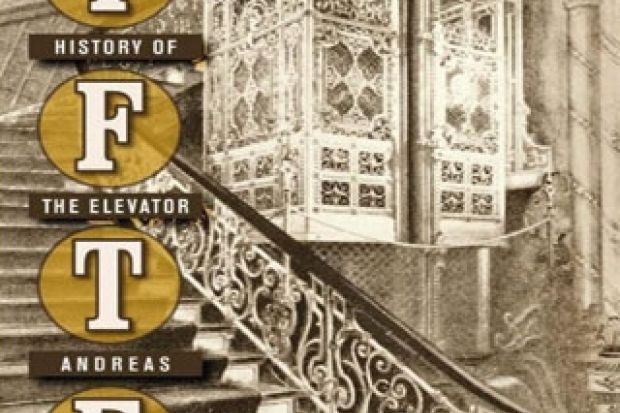Invented around 1850 and declared a “vertical railway” in 1853, the elevator became a North American and European fixture in public and private buildings by the early 20th century. Andreas Bernard’s study offers an exploration of the technological, architectural, literary and cinematic significance of elevators – the “vertical” response to Wolfgang Schivelbusch’s 1979 study The Railway Journey: The Industrialization of Time and Space in the 19th Century. In both works it is clear that the great shifts seen in the 19th century, which Bernard calls the “Age of Alignment”, amount to much more than just improved travel and transport.
The closeness of the connections between social class and building design becomes obvious when the author analyses the role of attics, originally the unsightly and (thanks to the stairwell) challenging retreat of the poor. Courtesy of the elevator, however, the attic turned in due course into the sought-after penthouse and by the 1920s “the top floor…entered its heyday”. While Baedeker travel guides initially paid particular attention to hotels that offered the luxury of an elevator to the upper floors, by the 1920s, lifts were simply subsumed under “usual international conveniences”. Similarly, the liftboy, once compared to the “railroad engineer” who needed extensive training, became redundant as push-buttons turned the use of lifts into a mere technicality for everyone.
Bernard’s exploration of the development and wider cultural impact of the lift – moving from hierarchies within the building to the controls – is most striking in the book’s final chapter, where he considers interiors. He shows how, particularly in film, the frighteningly limited space within the carriage can turn it into a confessional. In this role, elevators organise narratives that we associate with big cities. Playing on the anxieties of getting stuck (most notably in the rise of “elevator sickness” as lifts were becoming more widely established) and of unwanted intimacy in a confined space, the elevator forges unexpected links among its diverse users. This has been exploited by advertisers alluding to the unimaginable things that might happen between the moment the doors close and their opening shortly after.
Among the numerous illustrative examples of literary, cinematic and journalistic pieces of evidence that Bernard employs is one suggesting that an elevator may even have a political dimension. When, in 1959, Nikita Khrushchev was trapped in one for half an hour in New York’s Waldorf-Astoria Hotel, the incident had all the makings of a diplomatic clash between the principal players of the Cold War, East and West, KGB and CIA.
If one considers the fictitious and real personalities this study takes into account, be it politicians, technicians, employees or dinner-party guests on their way to the exclusive top floors of hotels and private apartments, the most striking feature of the elevator is apparent: for a brief spell of time it acts as a leveller between its occupants. No wonder, then, that – technical and architectural fascination aside – it translates so smoothly into public imagination past and present.
Lifted is a well-informed and engaging cultural history. What’s more, Bernard manages to dissect processes that have shaped the transition from the 19th century to the 20th, illustrating the elusive phenomenon of “modernity”. After reading this study, it becomes at least temporarily impossible to use a lift without a brief contemplation of what it may particularly signify in the here and now.
Lifted: A Cultural History of the Elevator
By Andreas Bernard
Translated by David Dollenmayer
New York University Press, 309pp, £22.99
ISBN 9780814787168
Published 25 April 2014





